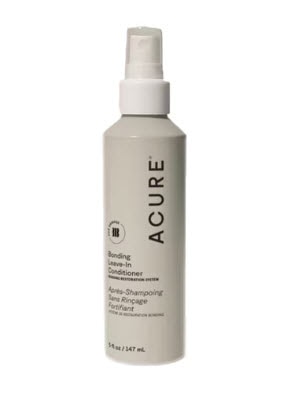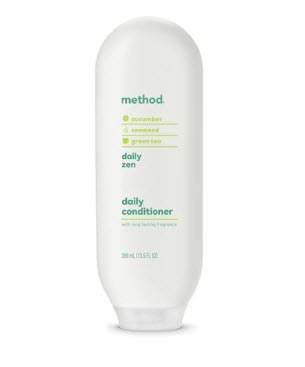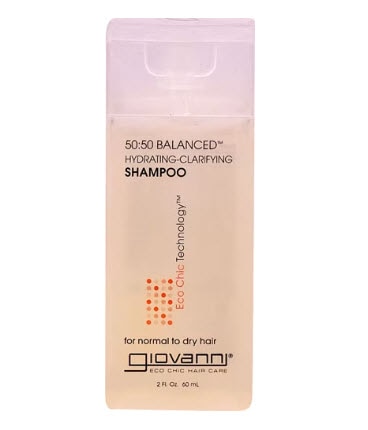Have you ever tried a highly rated hair product and found that it left your hair feeling greasier than before? Or maybe your hair feels dry and frizzy, as if you didn’t use any product at all.
The reason behind these outcomes often boils down to your hair porosity. Understanding this concept can do wonders for your hair’s health and styling preferences. Discover what hair porosity is, how to determine yours and which products will yield the best results for you.
What is hair porosity?
Porosity is your hair’s ability to absorb and retain moisture. Knowing the three layers of your hair will help you fully understand this concept.
- Cuticle: This tough, protective outer layer of hair is made up of overlapping smaller cuticles, like roof shingles.
- Cortex: The cortex determines your hair color and absorbs the products applied to your strands.
- Medulla: This is the innermost layer that holds moisture, like the pith in the center of a tree trunk. It’s very fragile, so those with thin hair typically have thin medulla layers.
Healthy hair requires water, oils and moisturizing ingredients, which must pass through the cuticle and into the cortex. However, some cuticles are too tight, preventing products from penetrating the strands, while others are more loose. Your cuticle’s structure determines your porosity level.
Knowing your hair’s porosity — whether high, medium or low — is like having a cheat sheet for great hair days. It helps you pick the right products and care routine for stunning, shiny locks.
How to determine your hair’s porosity
Try at least one porosity test at home to unlock your hair secrets. Start with clean, product-free tresses for accurate results.
1. The strand test
Take a hair strand and gently brush against it from the bottom to the top. If you feel bumps along the way, you may have high porosity. A smooth surface means your cuticle is bound tight and has low porosity.
2. The float test
Fill a glass with room-temperature water. Take a clean strand, put it inside the glass and wait for a few minutes. If it floats, you have low porosity. If it sinks, it indicates high porosity. A strand suspended in the middle shows you have a medium or normal porosity.
3. The spray bottle test
Spray water on your strands and observe how it settles on the surface. If droplets don’t penetrate the hair, you have low porosity. If water forms a few droplets but sinks in easily after a few seconds, you have medium porosity. No droplets on sight indicate high porosity.
What causes your type of hair porosity?
Genetics is the main cause, but lifestyle and environmental factors can play a role, too. Chemical processing, overwashing, coloring, blow drying, bleaching, perming, heat styling, overbrushing, and exposure to harsh weather and ultraviolet rays can impact your hair’s ability to absorb and retain moisture.
Care tips for various hair porosity types
A proper routine can help unlock healthy locks. Discover care tips and product recommendations based on your porosity type.
1. Low porosity hair
Low porosity hair has tightly packed cuticles, making it difficult for products to penetrate the cortex. This may explain why your strands repel water during washing, take longer to air dry or look shiny even though it feels stiff. Use a protein-free conditioner and apply it to wet hair for easy absorption. Wear a heat cap or wrap your hair in a warm towel for best results.
Use shampoos that contain moisturizing benefits like honey or glycerin, as they can penetrate your strands easily without leaving residue. If debris shows up on your hairbrush, it may be a sign that you have product buildup. A clarifying shampoo can help unlock your hair’s natural shine. Avoid using products with oil, which may settle and weigh down your strands.
These items will help boost hair moisture:
- Shampoo: Giovanni 50:50 Balanced Shampoo moisturizes without weighing down your hair. It’s free from sulfates, parabens and other potentially harmful ingredients. Say goodbye to product buildup and hello to more manageable hair.
- Conditioner: Method Daily Conditioner Daily Zen has long-lasting fragrance and moisturizing features. Your low porosity hair will love its lightweight consistency, leaving it soft and shiny.
2. High porosity hair
High porosity hair has raised or damaged cuticles. Your locks can absorb moisture easily but cannot retain it for long. Having this type means dealing with frizz, breakage and dryness. Many people use the LOC method, which stands for leave-in conditioner, oil and cream to boost texture. Here’s how to do it:
- Apply leave-in conditioner to damp hair.
- Use an oil to seal in moisture.
- Lather hair cream to lock in all ingredients.
Use heat protectant before you blow dry or use other heat styling treatments to avoid further damage. If you live in a humid area, steer clear from products with humectants to avoid poofy and frizzy hair. You need all the moisture you can get, so always follow your shampoo with a conditioner.
Keratin is also great for high porosity hair. It is a protein that combats dryness, makes hair shinier and promotes new growth. While it is present in many hair products, you can also try taking keratin supplements.
Consider adding these amazing products to your current routine:
- Leave-in conditioner: Acure Bonding Leave-in Conditioner has coconut oil that tames flyaways and provides heat protection. It has all the ingredients that your high-porosity hair needs.
- Hair cream: If you want more defined curls, consider the Cantu Shea Butter Moisturizing Curl Activator Cream. It adds shine and moisture to unlock healthy-looking hair.
3. Medium porosity hair
Do you have medium porosity hair? Lucky you. Your hair’s cuticles are perfectly balanced, letting in just the right amount of moisture. Your locks are easy to style and quick to dry. The goal is to avoid reaching an unbalanced state.
Use gentle products like a clarifying shampoo. You can try a multistep routine, but use lightweight items. A well-balanced porosity means you can experiment with various protein-rich brands to find out the ideal moisture balance.
Protect your hair from breakage with these products:
- Shampoo: Aveeno Apple Cider Vinegar Blend Clarify & Shine Shampoo has apple cider vinegar that gently cleanses and adds shine to your hair. It has simple ingredients for a well-balanced porosity.
- Hair treatment: Daeng Gi Meo Ri Hair Treatment Ginseng Blossom has five types of medicinal herb extracts that supply protein for your strands.
Take the hair porosity test today
Knowing your hair porosity means recognizing your crowning glory’s unique needs. Align your routine with your type to achieve tho




